Have you ever encountered strange hand gestures in a yoga class or in mediation and wondered what it was all about? The symbolic notion of drawing your fingers together to create a shape is called a mudra.
The history of mudras
Mudras are instilled in Hindu and Buddhist history and symbolise spiritual intention. Due to yoga’s connection to Indian history – it was where yoga was born and has evolved over 5000 years; until it began to filter out globally in the 1900’s – mudras have remained part of the practice and accompany some hatha postures or seated meditation, even in today’s modern classes.
The definitive text on modern Hatha yoga (the Hatha Yoga Pradikipa) has a forward by BKS Iyengar and Swami Muktibodhananda which confirms the use of mudras to assist the practice of yoga in its traditional sense – to still the thoughts and unite body, mind and spirit. “Mudras and bandhas act as safety valves in the human system. Asanas act in a similar way. All three help to suspend the fluctuations of the mind, intellect and ego, so that attention is drawn in towards the Self.”
These types of practices are especially of interest to yoga therapists, as they tap into the more subtle forms of using yoga for healing.
What are mudras?
Although specific gestures made with the hands and fingers can be found all over the world, it is debatable where exactly the concept of mudras originated. Mudra means “seal” in Sanskrit and can be spotted in ancient Hindu and Buddhist statues, religious texts and in artwork adorning temples across the Indian subcontinent. We can identify deities, saints, gurus and The Buddha performing distinct hand poses, in either movement or meditation.
According to the textbook Asana, Pranayama, Mudra, Bandha by Swami-Satyananda-Saraswati “Mudras can be described as psychic, emotional, devotional and aesthetic gestures or attitudes.”
Mudras have also been used in traditional dance especially in Bharatanatyam and it is said that there exist close to 399 mudras across various disciplines. This includes 25 in Hatha yoga and 108 in regular Tantric rituals. Tantra refers to the esoteric traditions of Hinduism and Buddhism that co-developed around the middle of 1st millennium CE. Mudras are also prevalent in Kundalini yoga and link to the energetic notions of chakras and shakti energy.
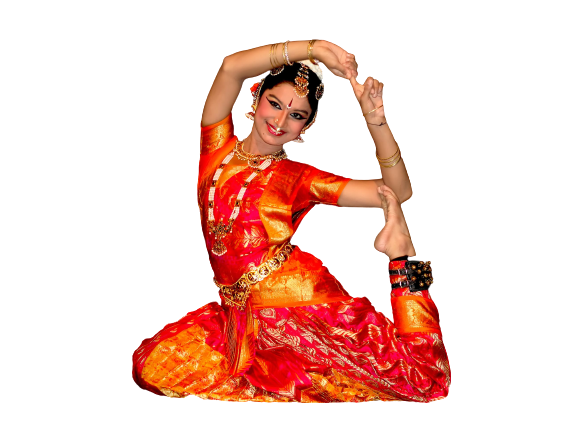
Why use mudras?
As mudra means seal or lock, the point of holding a mudra is essentially locking in the flow of energy in our energy system (the body) so we can direct it to reach a higher state of consciousness. By working with the “Hasta” we can stimulate the energy lines in the hands, which also correspond to the meridians in Traditional Chinese Medicine (TCM). In Ayurveda and TCM the Five Fingers represent each of the Five Elements – Thumb = Fire, Index = Air, Middle = Space, Ring = Eartha and Little = Water.
Health and Yoga explains: “When a finger representing an element is brought into contact with the thumb, that element is brought into balance.” Not only are mudras designed to stimulate energetic flow, they are a step to be taken after becoming adept at asana and pranayama, when the bandhas are practiced regularly – these are important and integral energetical (which correspond with key muscles groups) locks at the root of the body, the solar plexus and the jaw/chin.
The secrets of yoga clarify “together with the Bandhas, Mudras redirect the energy flow, linking the individual pranic energy with universal force.”
Mudras also come with a warning in both Hindu and Buddhist circles. They are not to be used by the spiritually unprepared or undedicated – they are very potent.
“Mudras are higher practices which lead to awakening of the pranas, chakras and kundalini, and which can bestow major siddhis, psychic powers, on the advanced practitioner”, claims Swami Satyananda Saraswati in Asana Pranayama Mudra Bandha.
However, there are many mudras that have made it into the mainstream, which are safe and easy to practice.
What makes mantras and mudras of such interest to yoga therapists is how they tap into the parts of the body that can be most effective for promoting healing. The Homunculus Diagram shows the human body in proportion to the amount of nerve endings in each part. For this reason, when offering a yoga chikitsa, yoga therapists pay special attention to the parts of the body with the greatest number of nerve endings because of their efficacy to support healing – the face, lips and mouth (mantras) and the hands and fingers (mudras).
Thus, mantras and mudras help link physical actions to the functioning of the mind. Especially for active students, those who find meditation challenging, or those who are pitta vitiated, Ayurvedic-speaking, mantras and mudras can be a highly effective point through which to access meditation.
Commonly used mudras
Here is a guide for some easy and better known mudras you can or may already incorporate into your yoga, meditation or spiritual practice.
Anjali Mudra: Press the palms of the left and right hands firmly into one another. It is the universal symbol of prayer and Anjali itself means “offering”, therefore when we are offering our heart, our compassion and our blessings.
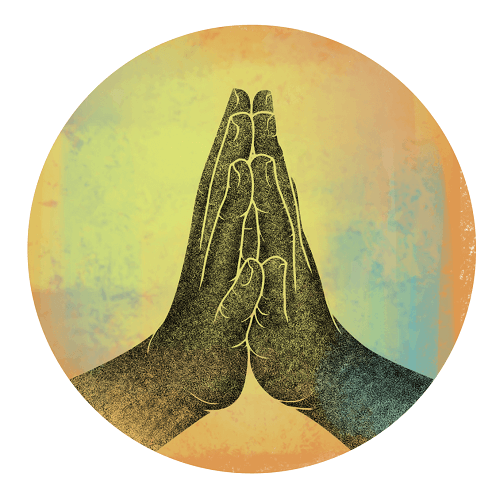
Gyan Mudra: Press your thumb and forefinger together. Extend the rest of the fingers straight. When you are seated in a cross-legged position, rest the back of your hands on your thighs. This mudra symbolizes unity and connection. In is also called Jnana (Knowledge) Mudra and often accompanies contemplation or meditation.
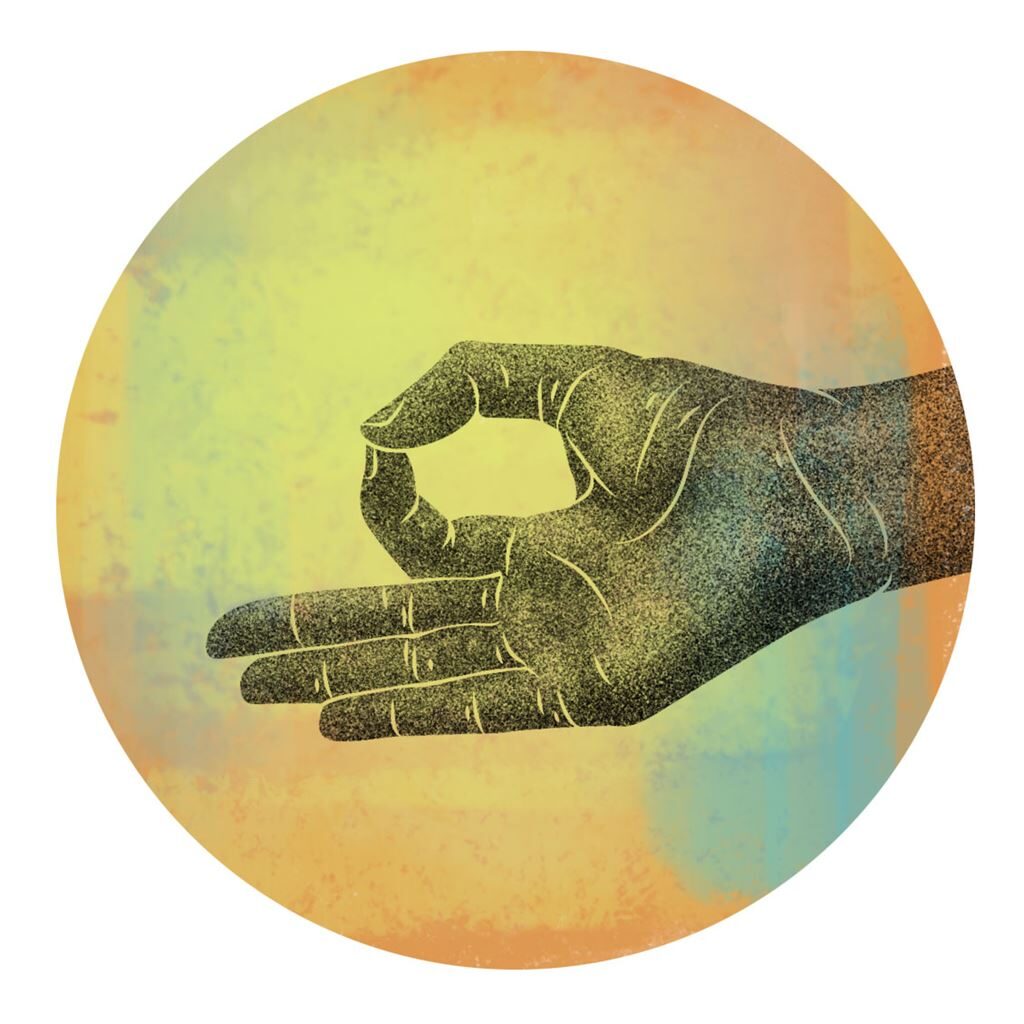
Vishnu Mudra: The index and middle finger are bent in toward your palm. The thumb, ring finger, and pinky remain extended. This mudra is used for alternate nostril breathing (nadi shodana) and assists us in receiving energy; whilst nadi shodana helps balance both hemispheres of the brain and reduce stress.
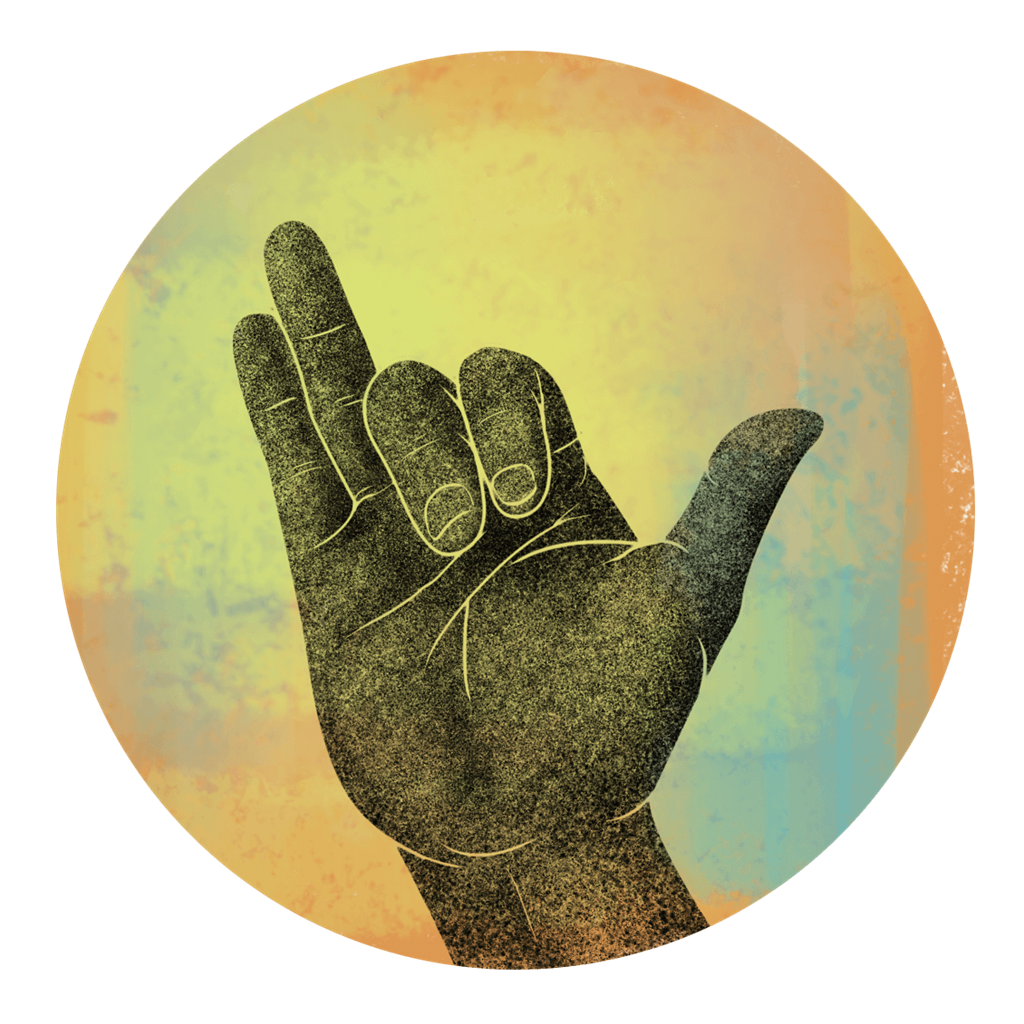
Dhyana Mudra: While seated, put your left hand in your lap with your palm facing up. Place your right hand on top of your left and bring your thumbs to touch above your palms. This shape of this triangle represents the three aspects of Buddhism: Buddha, sangha (community) and dharma (teachings).
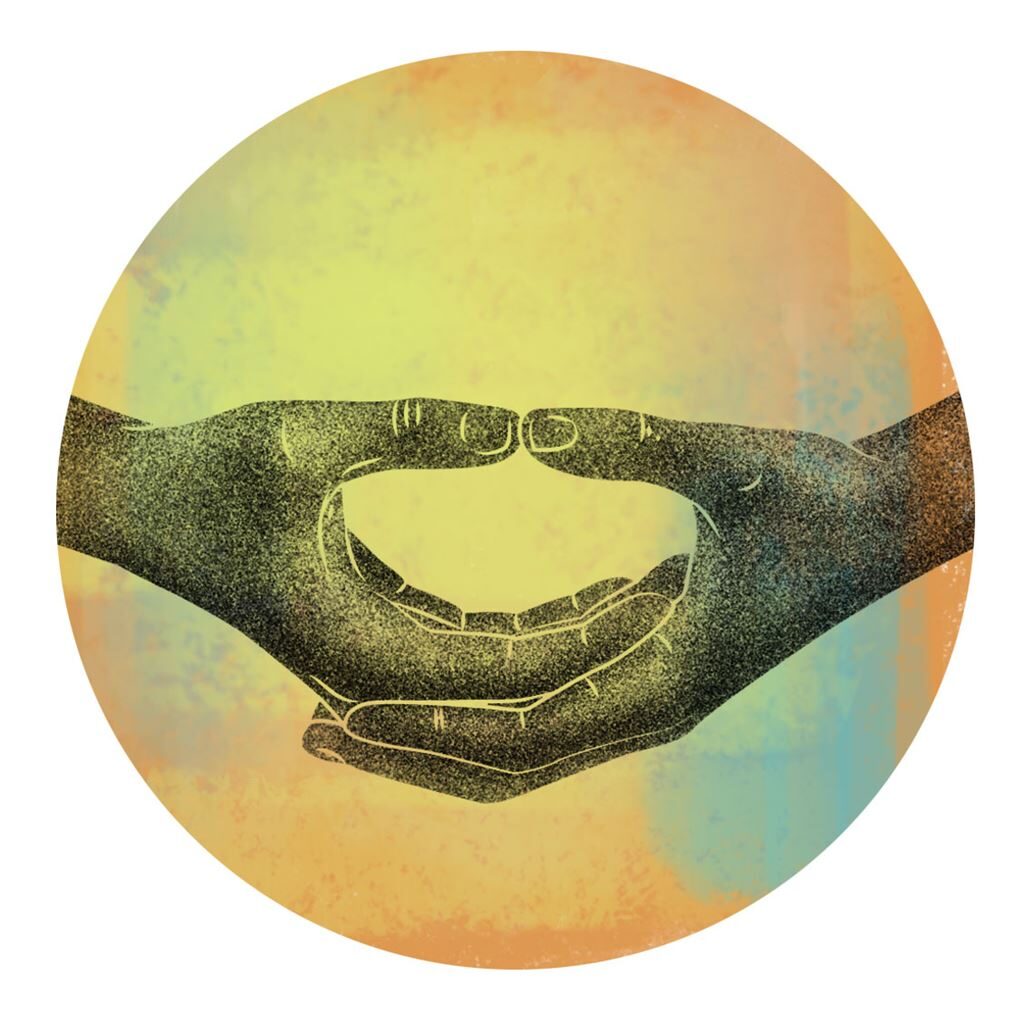
Prana Mudra: Bring the tips of the little finger, ring finger and thumb together. The index finger and middle finger remain extended, with the palm facing up. Prana mudra is a sacred hand gesture or ‘seal,’ used during yoga and meditation practice as a means of channeling the flow of vital life force energy known as prana.
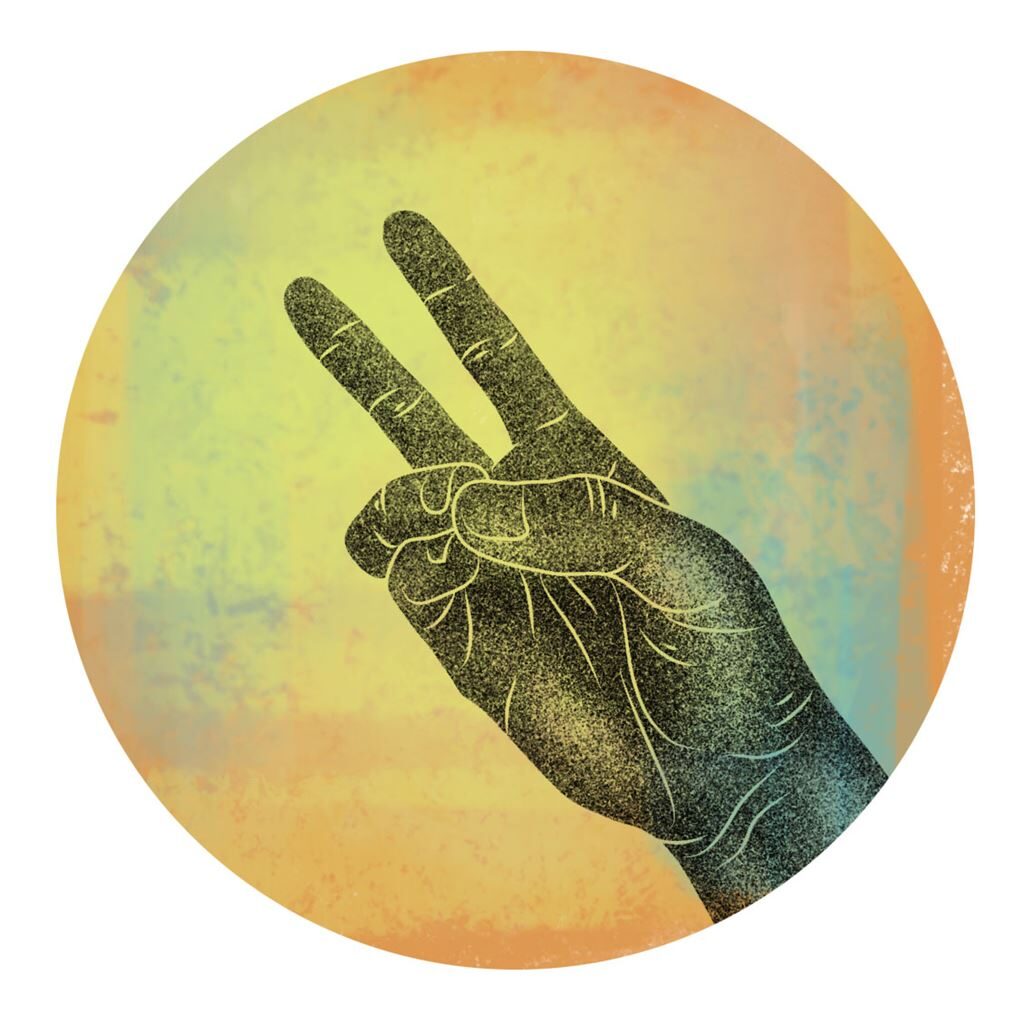
Mantras
Mantras have transcended the yoga community and are commonly cited as ways to enhance performance and in self-help circles. We repeat these words or short phrases to manifest an outcome or send out an intention, reminiscent of a prayer.
In yoga, mantras are chanted or repeated silently. When chanted or spoken aloud, we activate the healing capacities of connecting the brain to the mouth, lips and tongue. Even if repeated silently, mantras can help focus the mind during meditation.
Some common mantras include:
- Soham Mantra – Two syllables, so ham, that can be translated as “I am He/That.” It is derived from the Sanskrit, sah, meaning “He,” and aham, meaning “I.” It is a universal and natural mantra because it is present within everybody as the breath, with the sound of “so” during inhalation and “ham” during exhalation. As such, So’ham is a mantra that is chanted just by concentrating on the breath because the breath chants it naturally.
- Kirtan kriya – Four syllables, sa ta na ma, meaning birth, life death and rebirth – make up this classic mantra. The Kirtan kriya can be highly effective in focusing the mind during meditation when it is repeated over and over in a melodic way.
- Peace mantras – Om shanti shanti shanti is a common mantra used to call in peace, often heard at the end of a yoga class or to conclude a longer chant. Another mantra for peace can be more personal, such as breathing in “I am at peace,” and repeating it on the exhale. If “at peace” does not resonate with you, you can substitute another state of being to help bring a sense of ease to the mind and body.
- Devotional mantras – Mantras can also be used to chant devotion to a belief system or deity. One of the most common devotional mantras is the Gaytri mantra, which Sri Swami Satchidananda translates as “Let us meditate on Isvara [God] and His Glory who has created the Universe, who is fit to be worshipped, who is the remover of all sins and ignorance. May he enlighten our intellect.”
Decoding mudras
Just as more scientific research is going into the health benefits of yoga, researchers at the National Institute on Deafness have also shown that the brain centres that decipher language or words and hand gestures are one and the same.
As our awareness grows on a more subtle level through the practice of yoga, we not only reap the physical benefits, but are able to put into practice ancient techniques that are relevant for self-care and communication. It seems mudras are a powerful tool to reach a deeper connection with our own body-mind, as well as conveying meaning to others.
Now that you know a bit more about mudras, perhaps it will help to perform them with more knowledge, intent and appreciation.
Join us for our Pranayama Technique and Therapeutic Yoga session where we use lot of Mudras and Mantras in Yoga.
